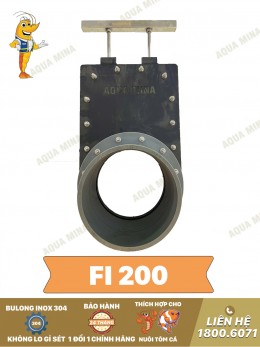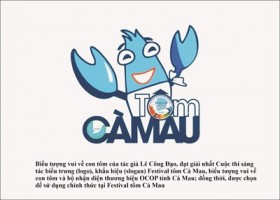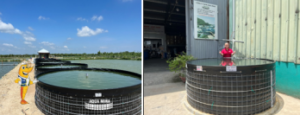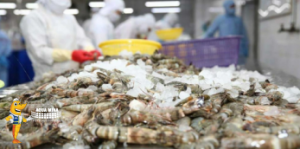Optimal Stocking Density for Shrimp Nursery in Tanks: Key Influencing Factors
1. Salinity: High-density shrimp nurseries with fast molting cycles require large amounts of minerals daily to support post-molt recovery. Seawater with higher salinity offers valuable minerals for shrimp health. For safe nursery management, a minimum salinity level of 7-10 ppm is recommended
2. Culture Method: Different methods impact environmental load. Daily water exchange methods can handle a greater load but cause more environmental fluctuations. Low-exchange systems have lower environmental impact but require additional mineral supplementation to prevent soft-shelling. Many farmers now prefer low-exchange systems to minimize disease risk, environmental stress, and operating costs, which often results in better nursery outcomes.

3. Nursery Duration: For similar environmental conditions and densities, a 20-day nursery period is generally more successful than extending to 30 days, as larger shrimp produce more waste, potentially causing rapid surges in harmful substances (NH3, NO2, H2S). Longer nursery periods also reduce resting spaces for recently molted shrimp, increasing the risk of cannibalism and higher mortality rates.
4. Temperature: The ideal temperature range for shrimp is 28-30°C. Extreme temperatures can hinder nutrient absorption and lead to nutrient-rich waste, causing water pollution and rapid spikes in toxic gases. At high densities, these impacts can affect shrimp health within hours.
5. Oxygen and Water Movement: In nursery tanks, water movement is typically managed with bottom aerators rather than water paddles, maintaining oxygen levels at around 5 ppm. Light water flow helps concentrate waste, making it easier to remove. Ensuring a backup power source for continuous aeration is essential.
6. Technical Knowledge: Skills and knowledge are critical to nursery success. Lack of technical expertise can lead to negative experiences with nursery systems. With basic knowledge, proper conditions, and technical support, farmers can maximize the advantages offered by round nursery tanks.
7. Feed: Feed quality significantly impacts water quality. Excess feed quickly deteriorates water quality, so feeding should be divided into smaller portions to ensure shrimp consume it all. High-quality feed minimizes waste, reducing environmental impact. Vinh Thinh Company has researched and developed a specialized feed for nursery tanks to support successful nursery management.
Conclusion
Beyond these key factors, other aspects also contribute to successful shrimp nursery management in round tanks. AQUA MINA recommends that farmers:
- Opt for round tanks with rain and sun protection to stabilize temperature.
- Maintain a minimum salinity of 7 ppm to ensure mineral sufficiency.
- Use low-exchange methods for stable conditions and keep testing equipment, oxygen supplies, and quality materials on hand for immediate use when needed.
- Siphon waste 2-3 times daily to remove it promptly.
- Seek technical assistance throughout the nursery period.
For newcomers, it’s advised to start with a stocking density of 1,000 shrimp per cubic meter. Once familiar, they can increase to 3,000-5,000 shrimp per cubic meter for 13-20 days.
The success of a nursery system also hinges on the biomass standard. For example, with a semi-biofloc system at 2.5 kg shrimp per cubic meter of water, a 100 m³ tank can support up to 250 kg of shrimp. For a million post-larvae (PL) stocked, this equates to about 0.25 g per shrimp, reaching the safe biomass threshold.

Countries worldwide have embraced 2-3 stage shrimp farming, achieving remarkable success. Vietnamese shrimp farmers are encouraged to adopt these modern practices to stay competitive. To assist, AQUA MINA offers low-cost, modular round nursery tanks (or mobile nurseries) suitable for various environments and local conditions.
Contact AQUA MINA for consultation and supply of aquaculture round tanks and aquaculture equipment for high-tech shrimp farming.
- Address: 685 National Highway 1A, Binh Hung Hoa Ward, Binh Tan District, Ho Chi Minh City
- Phone: 1800 6071 (Toll-free hotline)
- Email: sales@aquamina.com.vn or oversea@aquamina.com.vn
Aqua Mina's distributor in Japan:
REX INDUSTRIES CO., LTD
- Address: 1-9-3 Hishiya-Higashi, Higashi-Osaka 578-0948 JAPAN
- Email: kimakubo@rexind.co.jp
- Phone: +81-(0)72-961-9893
- Website: http://www.rexind.co.jp/e/

WE WORK FOR YOUR SUCCESS
Ngày đăng : 05/11/2024
2877 View
Other Articles
Cold stress: Effects on the plasma characteristics of whiteleg shrimp.
A new breakthrough in the prevention of diseases caused by the microsporidian parasite EHP in shrimp farming
Vietnam’s shrimp export outlook in the first quarter of 2026 continues to face heavy pressure from tariffs.
New England’s shrimp fishery to shut down for the long haul after years of decline
Crab exports to the United States account for more than 80%.
Thailand sets a target to increase shrimp production to 400,000 tons by 2026.
CTU-RAS: Recirculating Shrimp Farming for Sustainable Development
Vietnamese aquatic products reach new markets
Global Shrimp Forum: Global shrimp trade is reshaping
China’s Import Value Up 10%, Vietnamese Shrimp Remains Among Leading Suppliers
After the 7.5-magnitude offshore earthquake in Aomori that injured 34 people, Japan has issued a warning about a potential mega-earthquake
India’s shrimp exports accelerate despite the trade war with the United States



















.jpg)